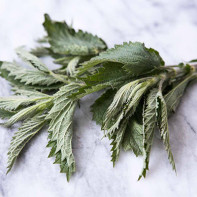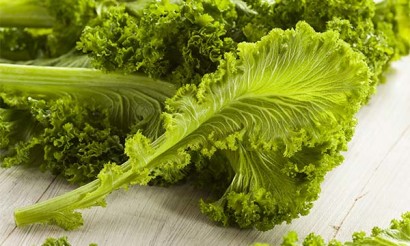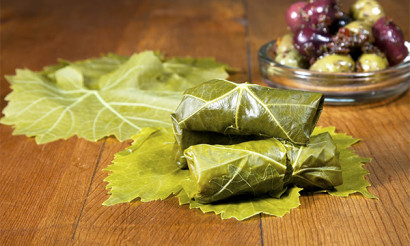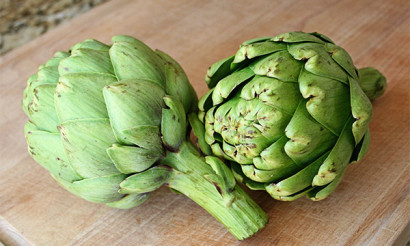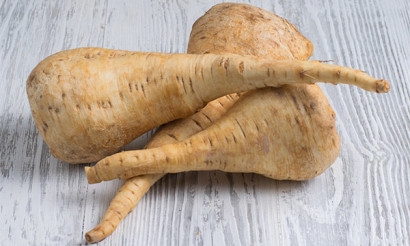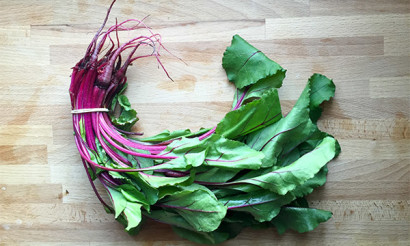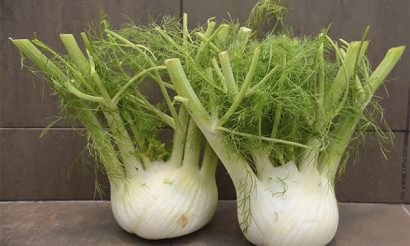Nettle: useful properties and contraindications
In Europe, this herb is revered - it is even specially grown, especially in the north, where nettles do not grow in natural conditions or grow very poorly.
- Where nettles grow
- Types
- Why nettles sting
- How to tell nettles from stinging nettles
- Composition and calories
- Useful properties of nettles
- For Women
- For Men
- If Pregnant
- Breastfeeding
- For kids
- For weight loss
- The benefits of dried nettles
- Nettle Tea: Benefits and Harms
- Nettles in medicine
- Diabetes mellitus
- In pancreatitis
- Gastritis
- For the bowel
- For constipation
- For gout
- For colitis
- For the liver
- For hemorrhoids
- Pri cholecystitis
- Nettle-based folk medicine recipes
- With rheumatism
- Compress for sciatica
- Tincture for blood purification
- To improve kidney function
- To accelerate healing of wounds, burns and frostbite
- With gout
- Nettle in cosmetology
- For face
- For hair
- Harms and contraindications
- How to harvest and store nettles
- What can be cooked from nettles: Recipes
- Soup
- Salad
- Can we give rabbits nettles
- Interesting facts about nettles
Where nettles grow?
This stinging weed with jagged leaves is, in fact, a weed that grows anywhere: in forest strips, in yards, in vacant lots and vegetable gardens, in forests and fields. Stinging nettle does quite well in Asian countries and in some areas of Siberia. Despite its unpretentiousness, the full-fledged plant can form only in well-moistened, rich in organic soil. That is why nettle is so often found along rivers and in forests.

During flowering, the plant forms small white flowers. Nettles bear small yellowish "nuts". The height of bushes is, on average, no more than half a meter.
Types
The main varieties are:
- Dicotyledonous (in the territory of the Russian Federation is found in the forest-steppe/steppe zones).
- Narrow-leaved (place of growth - Korea, Mongolia, China).
- Stinging (Germany, Poland, Russian Federation).
- Kievskaya (place of distribution - Poland, Italy, Palestine, etc.).
- Flat-leaved (where it occurs - east of Russia, Japan, China).
- Hemp (place of growth - Central Asia, territory of the Russian Federation, China, Mongolia).
Today many species and varieties of nettles are known - more than 50 in total. Of the most common species, two can be distinguished:
The dicotyledon nettle.
It is also called the medicinal nettle. This plant is popularly called "sting" or "greaseplant. The dicot herb is characterized by a straight, strong trunk that grows to a meter and a half. The average height of the dicotyledon nettle is less than one meter. The plant has large heart-shaped leaves with denticles along the edges. Inflorescences are shaped like spikelets. Nettles "burn" the skin with small, barely visible hairs that are located on the surface of the leaves and stem. This variety is called a bicentennial because the male and female inflorescences grow on different bushes.
Stinging nettle.
This species is characterized by its small size - its stem usually does not grow taller than half a meter. The leaf of stinging nettle is compact, no more than 5 cm in diameter, it has an oval or ellipse shape. Nettles get their name well deserved - it burns quite sensitively due to the many stinging hairs.
Why Nettles Sting
Unusual property instantly "burn" to the skin when touched - just a way to protect against being eaten by herbivorous animals, which, incidentally, about this feature of the plant is well aware and bypass it. Many people may have noticed that the stems and leaves are literally dotted with barely visible thin villi, which easily pierce the top layer of human or animal skin. The tip of the "sting" when pricked breaks off and remains under the surface of the skin together with the irritating "cocktail". It contains formic acid, vitamin B4 and histamine, which causes local irritation.
The liquid contained in the stinging nettle is a weak poison that is not harmful to humans. On the contrary, its effect on the body is beneficial, because it increases blood circulation, which allows you to actively get rid of harmful substances. For this reason nettle brooms are sometimes used in baths.
A strong allergic reaction when in contact with stinging leaves - redness and burning - can indicate a weakened immune system and that there is a lack of vitamins in the body. However, a nettle burn poses no danger in any case, and usually goes away completely in a few hours. The slight itching may persist for some time, after which it completely goes away.
There are several proven ways to quickly get rid of the unpleasant symptoms of the "bite" of the nettle bush:
- Wash the affected area with a solution of household soap.
- Combine baking soda with cold water and apply the mush to the surface of the skin.
- Apply a fresh sorrel leaf to neutralize the formic acid on the skin.
- Treat the affected area with aloe juice.
Very rarely, but still there are severe allergic reactions to nettle venom, there are even a few known cases of death. Severe allergic reactions to nettles is expressed in a severe rash, swelling at the site of contact and even vomiting, diarrhea, fever. In such cases, you need to call an ambulance.
How to distinguish nettle from stinging nettle
It is quite easy to do this despite the fact that both species very often grow side by side and even mixed together. Nettle sting - a miniature plant, about half a meter high, thickets, as a rule, does not form, grows alone bushes or in small groups. Leaves are very small, oval-serrate.
The high bipedal nettle is the first and most noticeable difference between it and stinging nettles. The inflorescences are quite long, much longer than the leaf petiole. The leaf itself has an elongated, elongated shape. This plant very often forms dense impenetrable thickets.
Composition and calories
In the Russian Federation, nettles have long been considered a common weed, since they grow almost everywhere. In spite of this fact, it is very rich in vitamins and necessary for the human body microelements. Thus, nettle is richer in vitamin C than any citrus and black currant. Carotene content of greens is far ahead of carrots, sorrel and sea buckthorn. If the body is deficient in vitamin A, just 20 grams of nettle leaves can get its daily quota. Nettles are also vitamins K, E and a whole arsenal of useful trace elements:
- flavonoids;
- tannins;
- tannins;
- magnesium;
- iron;
- calcium;
- copper;
- organic acids (formic acid);
- glycosides;
- chlorophyll;
- phytoncides.
The caloric value of 100 g of nettle is 33 kcal.
Useful properties of nettles
Please note! The whole plant is used as a raw material for making medicines - from the roots to the tips of the leaves. Collect the leaves from early summer to early fall. Do it only in dry and clear weather when there is no dew on the plant. Wear thick gloves when picking nettles. If large quantities need to be harvested, garden shears, a scythe or sickle are used.
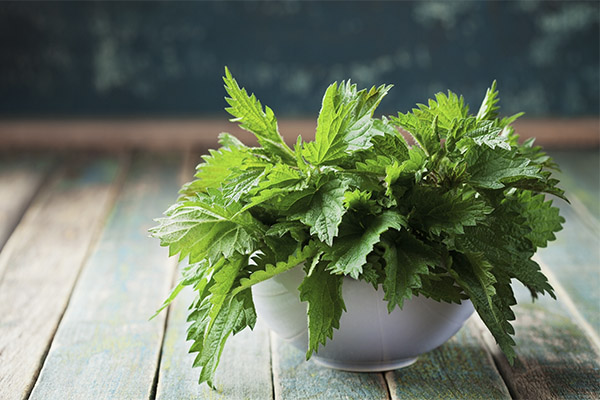
For women
- Most often, women wash their hair with nettle decoction for the purpose of general improvement of the skin, getting rid of dandruff and strengthening the hair. Due to the effect of chlorophyll, washing the head with a decoction of this plant is good for diseases such as seborrhea, focal or nesting baldness. To prepare one portion of the broth will need 100 grams of fresh raw materials, which are boiled in a 1 liter vinegar solution (water and vinegar are usually taken in a ratio of 1:1). The treatment usually takes 1 month, followed by a break for a few weeks, then the course is completely repeated.
- It is useful for women to drink fresh nettle juice regularly to help with internal bleeding. Take one teaspoon 3 to 5 times a day. If your periods are too heavy, it is recommended to take in conjunction with medication (only after consulting a doctor). Drink heavily diluted fresh juice (teaspoonful per quarter full glass of water). The juice in this case is usually prepared directly from the leaves, which are collected during the flowering period of nettles.
- Decoction is useful for anyone to take for obesity. To prepare it, pour about 250-300 ml of water over one large spoonful of finely chopped leaves. The broth should be drunk several times a day for half an hour before a meal and 1 tsp.
- In menopause decoction can reduce the frequency of hot flashes, as well as partially remove heavy sweating. In some female illnesses, a freshly prepared infusion of nettle and chamomile flowers is used directly for douches. According to an ancient recipe, for its preparation take 1 tbsp. carefully crushed stinging leaves and the same amount of chamomile flowers, pour half a liter of boiling water, let stand for half an hour or an hour. Before self-medicate, be sure to consult a doctor!
For men
Very useful are nettle seeds, which can increase and strengthen male power. A few simple recipes:
- It is useful to brew one teaspoon of seeds as a tea and drink an hour before a meal.
- To enhance libido, the seeds should be mixed in equal parts with honey and homemade wine. Take one tablespoon of the mixture before meals 2-3 times a day.
- Increase the male libido and the roots of the plant. They should be well washed, dried and finely chopped as much as possible. After that 4 teaspoons of raw materials should be pour 1 liter of vodka, let stand for at least 3 weeks, after which the infusion to take 15-20 drops before meals.
- Improve the male urogenital system will decoction brewed according to a simple recipe from 1 tablespoon of nettle and 1 liter of water. Composition to infuse about half an hour, and then take on the inside of 100-150 grams. Nettle broth helps with premature ejaculation and prostatitis (as an aid!).
When pregnant.
Nettle, as a rule, is used only in the later stages of pregnancy. The leaves and roots are used.
Important properties of nettles for expectant mothers are as follows:
- Helps reduce cholesterol levels, helps with flatulence.
- Activates the digestive process, speeds up the metabolism.
- Has a pronounced anti-inflammatory effect.
- Improves appetite.
- It raises hemoglobin values and is often used as an adjuvant for anemia.
Since the decoction contains B vitamins, organic acids, phosphorus, as well as potassium, sodium, copper, it is recommended to drink during pregnancy as a tea. To improve the taste and effect of the drink, you can mix in identical proportions stinging leaves, mint and raspberries. For a decoction, it is enough to use two tablespoons of the herbal mixture for one liter of water. In freshly brewed nettle "tea" you can add a little sugar, lemon juice or ginger to taste to improve the taste.
When breastfeeding.
In some cases, nettle decoction is quite capable of helping with problems with lactation. However, any medication, including herbal decoctions, should be taken with great caution and only after consulting your doctor.
Nettles are used in different forms during the period of pregnancy. Most often it is dried leaves from the drugstore. Sometimes young mothers like a soup of fresh nettle leaves. Such a healing stew can bring much more benefit than dried leaves, as it contains many vitamins and trace elements, which need to be replenished by the body after childbirth.
However, during the period of breastfeeding you can not abuse this product, so you should take it in moderation and with caution.
For children
For children, the benefits of nettles are obvious not only for educational purposes. Since the plant contains a lot of ascorbic acid, in other words, vitamin C, all kinds of decoctions and tinctures from nettles are good for improving children's immunity. This helps reduce the frequency of seasonal colds, improve the absorption of iron, which is necessary to provide the right level of hemoglobin.
Consumption of nettle broth can lower children's sugar levels without the use of drugs, which can have unwanted side effects. The leaves contain a lot of potassium and fiber, which have a positive effect on the intestines and help them get rid of undigested food residues.
The positive effects of nettles on children aged 2 years and older are also due to the presence of histamines in the plant. They can block allergic reactions and cleanse the blood. Experienced experts in phytotherapy recommend nettle decoction in the treatment of autoimmune diseases in children, but it should be done with great caution - only under the supervision of a doctor.
When losing weight
In the fight against excess weight, young nettles are especially useful. This plant, thanks to its pronounced diuretic properties, will help to quickly remove excess fluid from the body (which is extremely important for every slimmer), thus getting rid of edema and extra pounds. Many people have a reason for gaining excess weight is trivial intestinal dysfunction and a tendency to a rapid accumulation of all kinds of toxins and slags - in this case a nettle decoction is especially indicated. Natural drink will help not only to reduce weight, but also in the shortest possible time to normalize the gastrointestinal tract.
Among other things, this plant helps to significantly reduce appetite. Thus, the decoction contains substances that inhibit the receptors that cause feelings of hunger. Nettle also has a mild sedative effect, which helps to reduce stress and fight the habit of "eating" bad moods.
Thus, regular intake of nettle decoctions/tinctures can help the body gently and gradually get rid of excess weight.
The benefits of dried nettles
Useful substances such as carotene and protein are fully preserved in dried nettles. When dried properly, it retains most of the trace elements and vitamins it contains.
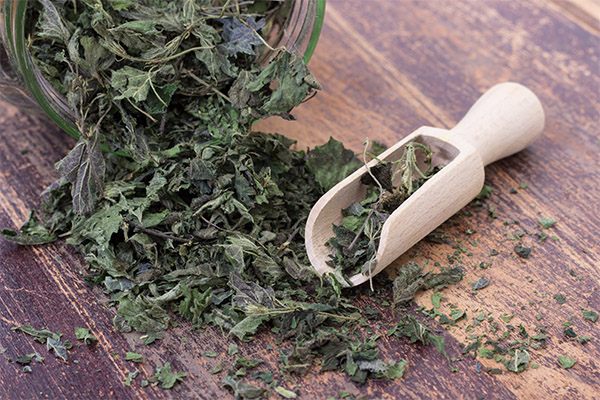
The useful properties of dried leaves:
- Help stop inflammatory processes;
- improve blood clotting, normalize carbohydrate metabolism;
- increase immunity;
- Have anticonvulsant, diuretic effect.
This is not a complete list of useful properties of dried nettles.
Nettle tea: benefits and harms
Nettle tea is useful for people who have problems with the gastrointestinal tract, liver and respiratory system. It is also recommended to take it for rheumatism, such an ailment as gout and diseases of the gallbladder.
However, not always nettle tea can be beneficial. It should not be taken if a person suffers from cardiovascular disease, because nettles contain blood-thinning substances. Nettle tea is also contraindicated in cases of kidney failure and in such cases as:
- Bleeding caused by the presence of tumors, polyps or parasites;
- High blood clotting;
- kidney diseases.
In any case, you should not abuse nettle tea, especially in extreme heat, when the body rapidly loses water.
Nettles in Medicine
This plant, which in our country is considered a weed, is widely used in medicine for the treatment of many diseases: rheumatism, hemorrhoids, pathologies of the gastrointestinal tract, respiratory organs, etc. The leaves, roots and fruits of the plant are used as medicinal raw materials.

In diabetes.
In the early stages of the disease and in mild forms of diabetes, the reception of nettle brings a tangible effect. For treatment, we use decoction or leaves in fresh and canned form. Very often this plant is introduced into the diet of patients with severe forms of diabetes, because it contains a large arsenal of vitamins and trace elements that help to strengthen the body and purify the blood. Children and adults suffering from this ailment are recommended to take 2 tablespoons of decoction per day.
In pancreatitis
Taking nettles is not prohibited neither in the acute nor in the chronic form of pancreatitis. However, in the acute course of the disease, it is not recommended to take nettle, as no effect of therapy at this stage with its help will be achieved.
As for chronic pancreatitis in periods of remission, the use of nettle is not only allowed, but also recommended as part of the diet. The consumption of decoctions in this case should necessarily be coordinated with the attending physician.
With gastritis
Nettle as a therapeutic agent is recommended for many gastrointestinal diseases, including gastritis. At an aggravation of the ailment you can use the following formulation: mix in equal proportions of stinging leaves and chamomile baskets, add the pierced St. John's wort and leaves of the common plantain. Pour a liter of boiling water at the ratio of 1 liter of hot water to 4 tablespoons of herb mixture. Take one glass three times a day for 1.5 weeks.
There is also another similar recipe that is suitable for therapy with chronic gastritis: mix finely chopped nettle leaves with St. John's wort in equal proportions, add a spoonful of cranberry leaves and the herb goldenrodroot.
For the intestines
Since nettle is very rich in fiber, it is recommended to take it in diseases of the gastrointestinal tract. Its fibers are not digested in the stomach and, passing through the intestines, work like a brush. Regular intake of decoctions or tinctures allows a good detoxification of the body, get rid of accumulated toxins, salts of heavy metals and all kinds of poisons. Nettle is able to restore and activate intestinal motility, and also prevents the fermentation of food residues.
For constipation
From recurrent constipation, as well as from stomach pain, the following recipe will help: 1 tablespoon of crushed raw materials pour 200 ml of boiling water, insist 30 minutes. Make sure to strain the finished decoction through gauze or a fine sieve, and then regularly take half a glass 2 times a day directly before meals. For a long time to take the medicine, as folk healers assure, you can not, because nettles have the property to increase blood clotting with prolonged use. Stool should gradually normalize, and the pain in the stomach, respectively, will stop.
When gout
As studies have shown, nettle contains quite an impressive number of useful substances, beneficial to the whole body. Nettle juice can be used to relieve gout attacks and for preventive purposes. It is obtained from fresh, well-washed leaves. With gout juice take 1 tsp. three times a day.
With colitis
For patients with chronic colitis, the following prescription composition is recommended: mix in equal proportions stinging leaves, peppermint, the usual drugstore chamomile and dried blueberries. Exactly 3 tbsp. mixture pour 3 cups of prepared boiling water, and then insist at least 4-5 hours in a thermos or in a pot with a lid, wrapped with a blanket. After that, strain and squeeze the raw material. Prepared infusion take warm one cup per day for half an hour before a meal.
For the liver
To improve the function of this organ, disrupted by improper diet for a long time or taking alcoholic beverages, you can use this healing decoction: 2 tbsp of raw materials pour 0.5 liters of water, then bring to a boil. Then it is advisable to simmer the composition for about 5 minutes more. After that, filter the decoction through gauze or colander, add no more than 1 tbsp. honey. Ready to take folk healers recommend warm medicine 3-4 times a day for not more than 100 ml.
Hemorrhoids
In order to treat this unpleasant disease, nettle can be used both internally and externally. For internal use, they are usually prepared at home natural teas, infusions, microclysters. Outwardly are used, as a rule, baths, lotions and special compresses of nettles.
To prepare an infusion of 10 grams of dried nettle leaf pour a cup of steep boiling water, then insist for at least half an hour. When ready, take an infusion of one-quarter cup three times a day before meals. The same infusion can be used for baths and lotions.
When cholecystitis.
People who have long suffered from gallbladder ailments, this recipe will help. It is recommended to take a decoction made from the roots of the dicot plant. To prepare it, pour 2 tbsp. of crushed roots with a cup of steep boiling water, then boil the composition for a minute over low heat. Next, be sure to let the broth infuse for 1 hour. Ready folk healing remedy should be taken 3-4 times a day before meals for a quarter cup.
Recipes of folk medicine based on nettles
With rheumatism.
Fresh, preferably young nettles are first carefully washed, scalded with boiling water or let wilt, finely chopped and squeezed by any available method. The resulting juice is stored briefly - in a cool dark place for not more than 3 days. Is taken internally by 1 tbsp. before a meal.
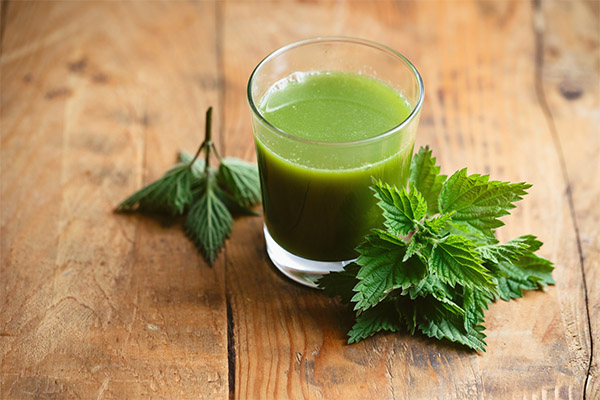
Compress with sciatica
According to this formulation, absolutely any nettle is suitable for medicine. Tincture or scalded with boiling water, fresh, just picked raw materials are used. To get the infusion, 2 spoonfuls of crushed leaves of grass are steamed in a mug of boiling water, covered with a strong cover and simply put in the warmest place in the house for half an hour. After that, it is mandatory to strain, impregnate the infusion with a piece of cloth, which is applied to the sore spot. Compresses are recommended to do regularly, namely, at least 2 times a day and keep for 1.5-2 hours each.
Tincture for cleansing the blood
Pour four tablespoons of dried leaves with a mug of boiling water. Heat the composition on low heat for 10 minutes, then let the healing remedy infuse for 30 minutes. Take as directed half a mug three times a day before meals.
To improve kidney function.
Pour 2 tbsp of dried leaves with a glass of boiling water (200 ml), kept on low heat for 10-15 minutes. Take internally half a cup in a bite of honey 3 times a day before meals.
To accelerate healing of wounds, burns and frostbite.
Grind dried material into a powder, sift. The resulting powder is sprinkled on the damaged area from 1 to 3 times a day. The powder is used to cover wounds under the bandage or do without it.
If you have gout
It is better to use nettle as part of the collection (not less than 40%). Pour a mixture of nettle, oregano, birch leaves in 0.5 liters of boiling water. Insist at least one hour (preferably two). Is taken internally no more than 100 ml 4 times a day for 1.5-2 months.
Nettle in cosmetology
This plant has been used for centuries by people not only in medicine, but also for the care of the appearance. It is especially useful for hair. Many ancient recipes have survived to this day. The medicinal properties, which are due to the presence of a large amount of chlorophyll in the plant, are now actively used in the modern perfume industry. Thus, a huge number of shampoos, lotions, tonics, creams, soaps, etc. are produced based on nettle extracts.
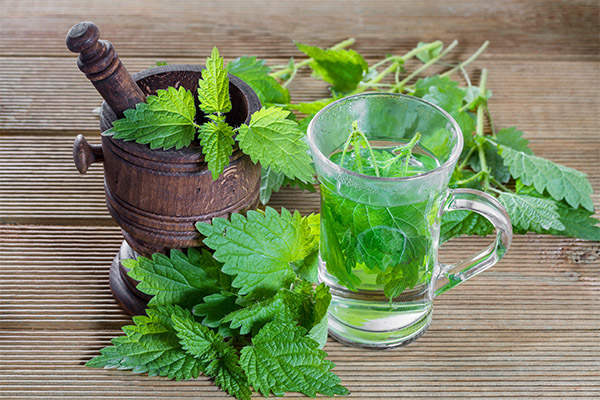
Nettle has a pronounced deodorizing effect on the skin due to the presence of phytoncides. A rich array of vitamins and minerals beneficial to skin, hair and body in general.
Juice and leaves are widely used by cosmetologists to strengthen hair follicles, alopecia, to get rid of dandruff, early graying and greasy hair. It is worth bearing in mind that the use of nettle is acceptable only for oily hair. In addition, some concentrates based on it can stain blond hair.
For the face
A real treasure trove of vitamins is young nettles, which sprout in early spring. It is considered one of the best remedies for problem skin care. Almost all of the trace elements and vitamins in its composition have antiseptic, bactericidal and anti-inflammatory properties:
- Vitamin A helps heal acne and pimples.
- Vitamin C helps to heal skin wounds, makes the skin elastic, strengthens the walls of capillaries and blood vessels.
- Vitamin K successfully fights swellings and freckles.
- Carotene moisturizes dry skin, making it shiny and glowing.
- Tannins reduce inflammation and smooth out wrinkles.
- The flavonoids have a rejuvenating effect.
- Organic acids even out skin tone.
- Potassium maintains the necessary percentage of hydration.
Nettle, with such a wide range of effects, is a great cosmetic remedy - natural, homemade and with almost no contraindications.
For hair
With the help of this plant, you can get rid of a number of troubles with the hair:
- Due to the stinging properties of the plant (which are almost imperceptible when applied), hair growth and density are improved, blood circulation is normalized, and the scalp receives more nutrients and oxygen.
- A decoction of nettle leaves is used to eliminate premature graying.
- Decoction is also useful for eliminating dandruff and the prevention of its appearance. It relieves irritation, dryness, regulates the level of oiliness of the skin.
Damage and Contraindications
Despite the numerous useful properties of nettles, the wrong and ill-considered use of it can cause significant harm to the body. When treating, you need to treat the process seriously, do not forget to consult a doctor, since nettle, like many other medicinal plants, has a lot of contraindications and peculiarities:
- It has a very strong effect on blood density and clotting, so it should not be used by people with high blood pressure, hypertensive people, patients with atherosclerosis.
- It is not recommended to use medicines based on nettle for people with varicose veins and thrombophlebitis.
- Do not take compositions prepared on the basis of this plant, with kidney disease of any kind.
- It is not recommended even in small quantities to take a decoction of nettle leaves in early pregnancy, because it can stimulate uterine contractions.
- Do not take a composition of nettle in malignant tumors of any kind.
The thoughtless use of even folk remedies can bring harm and complications instead of the expected recovery.
How to harvest and store nettles correctly
Any medicinal plant should be collected at a certain time, when it contains the maximum number of useful substances. Nettles are no exception. Before you start collecting, it is necessary to prepare theoretically, to know which parts can be collected and when.
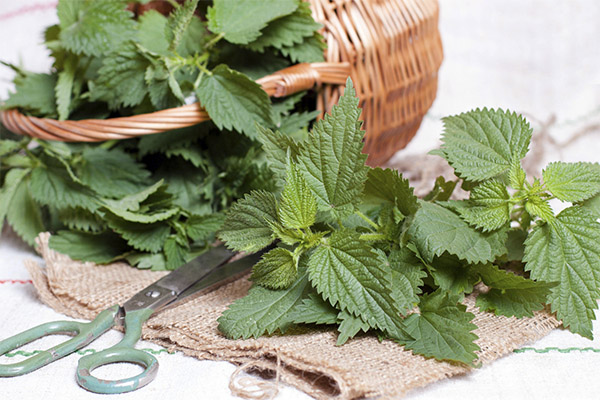
From the above-ground part, the most valuable material is the leaves of the plant. It is not difficult to collect them, and in a short time you can collect a large amount of raw materials. If you need to stock up directly on the roots, you should give preference to strong and sturdy plants with large leaves and thick shoots. Such bushes have a large root system.
The maximum concentration of useful substances is observed in plants in early spring, namely during the swelling of the buds, and after the seeds have matured. Thus it makes sense to harvest nettle roots in early spring and fall. This can be done in all weathers by digging out the roots with a shovel. Accordingly, the dug roots should be well washed.
Experienced herbalists are known to harvest the roots at the end of September, that is, when the above-ground part is still alive and the plant is easy to find in the thickets. This time of harvesting is also good because nettles have already had time to drop their seeds, so when digging up the roots, they get into the ground.
As mentioned above, the entire above-ground part of nettles is extremely rich in useful substances. Gathering to treat and strengthen the hair is most appropriate during the blooming period of the plant - from June to August. At this time, mainly harvested leaves. If collected later, the leaves will be tough, their lower laminae will wither and dry up.
Notice! The top part of the plant is best cut in the morning, after the dew has dried. The plant is still to be dried anyway, and unnecessary moisture is not appropriate here.
Nettles are very fond of good fertile soil with high humidity. It can be a place in the garden, on the banks of rivers and ponds, the plant is often found on the edge of the forest, in vacant lots and in ravines. However, despite such a widespread occurrence of the plant, it is not possible to collect it everywhere. For example, near busy highways and railroads, it is strictly forbidden to take raw materials, since in such places the plant accumulates dust and toxic substances abundant in exhaust gases. From nettles taken in such places, you can actually get a lot of harm.
You should not take plants from areas bordering city dumpsites and industrial plants, construction sites, etc. Consuming infusions and medicines from plants taken in such places can not only fail to cure old diseases, but also acquire new ones.
If the grass is harvested for drying, the stems are cut with a knife or sickle. After that, the cut green mass is allowed to rest for a few hours. After this time, the plant loses its stinging properties, so it will be safe to snip the leaves. It is better to choose thickets rather than single bushes for harvesting, then up to 50 kg of leaves can be harvested in one day.
Before harvesting plants, you must make sure that they are of good quality and free of infection. Nettles are very fond of nettle moth. It does not harm the plant itself, but it leaves the products of its life on the leaves, making them unusable. Do not take nettles that are entangled in cobwebs or have yellowed shoots.
When harvesting the roots, after digging them up, you should shake off the remnants of soil, then thoroughly wash the raw material. After that, use a knife to cut off the remaining stems. Wash the roots with hot water is not allowed, because in this case, some of the useful substances will be lost.
No less important is the storage of the finished dried material. For this purpose, you need a dry room. Dried material is stored in containers or bags of paper or cloth. The container should be signed, indicating the name of the plant and the date of collection.
What can be cooked from nettles: Recipes
In addition to cosmetology and medicine, nettles are also used in cooking. It is added to salads, soups and seasonings. This is not surprising, because nettles are not only useful, but also delicious.
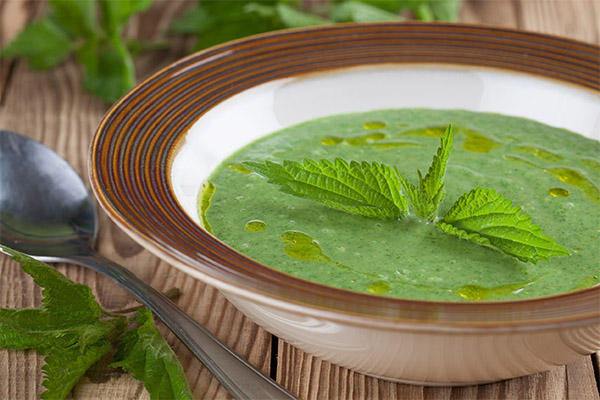
Soup
To make nettle soup, you will need the following products:
- Chicken - about 1 kg.
- Young nettles - 300-400 gr.
- 3-4 potatoes.
- 3 onions, 1 carrot.
- 1-2 garlic cloves.
- 1 egg.
- Melted butter.
- Salt, pepper.
From the chicken carcass cut the meat, mince it, add garlic and half a potato. Add an egg, pepper and salt to the stuffing and knead to the desired consistency. After that, form meatballs from the minced meat. They are placed on parchment and sent for a while in the refrigerator.
The rest of the chicken is placed in a separate pot, pour water, bring to a boil, salt, remove the foam. Add the onion and carrot cut in half to the broth and cook over low heat for 1.5 hours. After that, the broth is strained through a sieve. Anything left in the sieve, no longer useful, can be thrown away.
Nettles are chopped and tough stems are thrown away. The remaining potatoes and onions are peeled, after which the onions are chopped very finely and the potatoes are cut into small cubes.
Melt butter in a bowl with a thick bottom. In butter fry onion until golden brown, then add potatoes and fry for about 5 more minutes. Add half of the broth, bring to the boil and simmer on low heat for about 10 minutes.
Pour the rest of the broth into another pot, add salt to taste, and cook the meatballs for about 10 minutes. Then pour everything into the same pot. Before serving the soup to the table, put a small piece of butter in each plate.
Salad
To prepare the salad, you will need the following ingredients:
- 100 g of young nettles.
- 3 hard-boiled eggs.
- 3 tablespoons of sour cream.
- 1 garlic clove.
- A small bunch of parsley.
Preparing a salad according to this recipe will take no more than 10 minutes.
Fresh nettles are poured with boiling water, wait a few minutes, no more. After that, the boiling water is drained, peel the pre-boiled eggs and finely chop them. Nettles are chopped, parsley and garlic are added to the salad bowl. Dress the dish with sour cream or any vegetable oil, add salt to taste.
Can I give rabbits nettles?
If it is properly collected and processed, it will only benefit the-eared pets. Young nettles are not only one of the first green feeds in spring, they are also a great source of vitamins and proteins that rabbits need for growth and development. In this respect, nettles easily compete with feeds such as alfalfa and clover.
Young nettles are very useful for lactating mothers - they help to increase the amount of milk. It is also given to young rabbits for starter growth, especially for meat breeds.
Rabbits can be fed both fresh and dried nettles. To ensure that the animals get all the necessary nutrients from it, you need to know a few rules for its preparation.
- The best time to gather nettles for fodder is before they start blooming, before the stems and leaves become tough. Do not give animals nettles immediately after harvesting - fresh plants, well heated by the sun, can begin to ferment in the intestines, which will lead to dysbiosis. The raw material should be left to soak for a while in the shade; this, among other things, will get rid of the stinginess of the plant.
- Once the grass has softened sufficiently, it can be given to rabbits as a separate feed or mixed with bran or boiled crushed potatoes. It is important to avoid giving too much grass in the first days of the transition to seasonal feeding. This is to get the rabbits used to green leaves and shoots, which they did not consume in winter.
Interesting facts about nettles

- Nettles are a favorite delicacy and the only sustenance for several species of butterflies.
- The stinging tufts contain an organic formic acid that causes the skin to sting.
- A cloth woven from nettle fiber used to make quality sturdy sails.
- The nettle family includes more than a thousand species, mostly tropical.
- From a medical and culinary point of view, the leaves are the most valuable. They contain most of the vitamins and valuable minerals, tannins and protein compounds.
- The food industry produces a completely harmless green dye from this plant.
- Nettles are added to shampoos, as it perfectly strengthens the hair. It is very useful to rinse the hair with nettle decoction, and there is no need to wash it off.
- The English make wine from nettles. Moreover, to get 3000 liters of drink need only 40 kg of raw materials.
- Some tropical species of nettles sting very painful, and from the "bite" of several species can die.
- For more than 20 years, in the English village of Marshwood is a championship, the meaning of which is to eat as many nettles as possible. The tradition began when two locals argued over who could eat the most nettle leaves.
- Nettles can be used to produce high quality fabric that resembles linen in its properties. During World War II, this fabric was used to make uniforms for German soldiers.
«It is important: All information on this site is provided solely for introductory for informational purposes. Before applying any recommendations, please consult with a specialized specialist before applying any of the recommendations. Neither the editors nor the authors shall be liable for any possible harm caused by materials."



